From Estonia to Spain, on to the Netherlands and trapped in the West Indies – this was the journey of the young artist Victoria Olt, during which she realised something was missing; to find the missing part, she returned to Estonia and opened her own gallery here.
In her opinion, creating figures in art, which she herself does mainly with watercolours, is returning, too. It is the uncontrollability of watercolours that Olt considers an allegory of life. Estonian World met with Victoria to find out why.
You have lived, studied and worked in Spain. Please tell us your story – how did you get there and how did you end up back in Estonia?
I moved to Seville, Spain, when I was 13 because my mom fell in love with a Spanish person. I went to middle and high school there. It was very hard to communicate with people at first because I didn’t speak Spanish.
At one point, when I started to paint stick figures, cats and simple designs on my nails, people noticed and told me, “Oh wow, you have such nice nails!” That’s pretty much the only time anyone talked to me in my teens, so the designs I painted on my nails got more and more elaborate as the time passed.
I started my own nail art blog, participated in competitions and won a lot of them. I learned photography skills and editing. After posting on my blog for years, one day I got a bad burn on one of my fingers, which put an end to my nail art blog because I could no longer take nice pictures of my hand.
That’s when I started painting on paper. It wasn’t as hard of a transition as one would think – a lot of the knowledge of painting and shading are the same. You can see where I came from in my work today – for example, I use a lot of shiny mediums, like gold leaf. Shiny paint is something I sorely missed in traditional art which is why I later started making it myself.
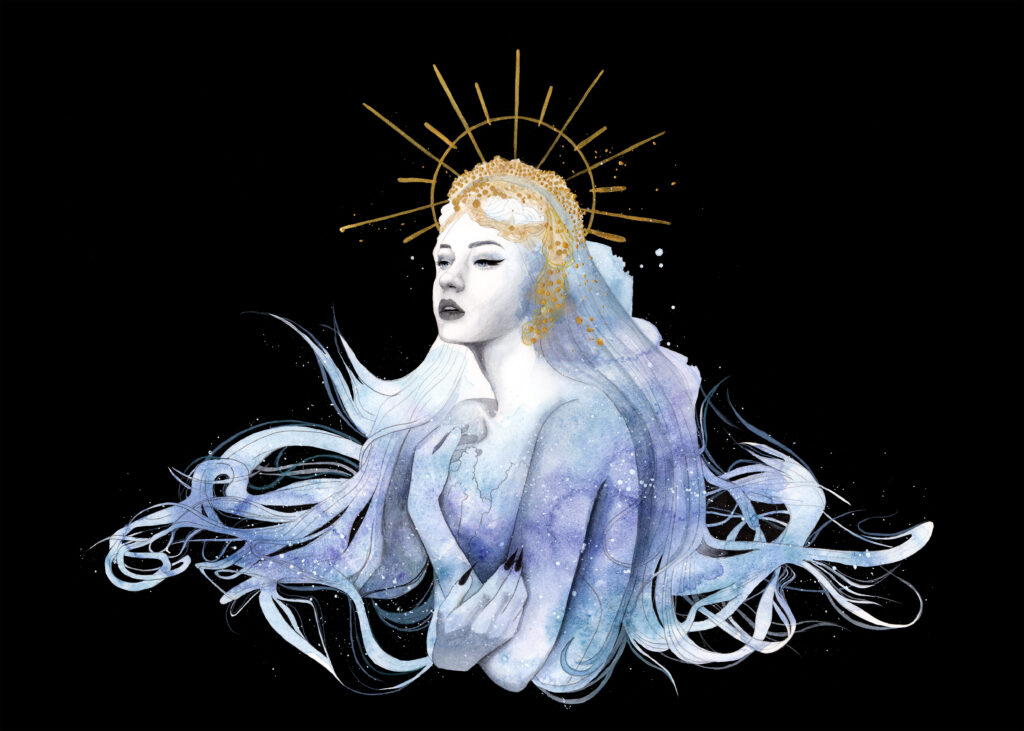
And later you entered the local art school and moved away even further…
Yes, this led me pursuing a degree in visual arts at the University of Seville. I tried a lot of different styles there, but my experience in art school was more of battling the teachers in the pursuit of my own style than that of having them help me improve. Everything I learned that made me develop as an artist was what I learned at home – despite the teachers. So, I still consider myself self-taught even though I went to the university to study art.
After university, I moved to Madrid, because I wanted a new environment to exist as an adult. I wanted to be in a place that didn’t carry any memories of my younger years. I lived there for two years and as I met my future husband in the city, we moved away because of his work.
We lived in Amsterdam as well as in Nevis, an island in the Caribbean Sea where we got married in November 2019. This was two weeks before COVID-19 was declared a pandemic, the airports were closed and we were basically stuck there for the height of the pandemic.
I came back to Estonia at the end of 2021 because I felt detached from my culture. A lot about being an artist is reflecting on who you are as a person – and I felt a piece of my identity was missing because I moved away when I was 13, which was still the phase at which one wants to live like in an American movie. So, once I had grown out of wanting to be like others in favour of wanting to be myself, I had to figure out who that is. This led me back to Estonia.
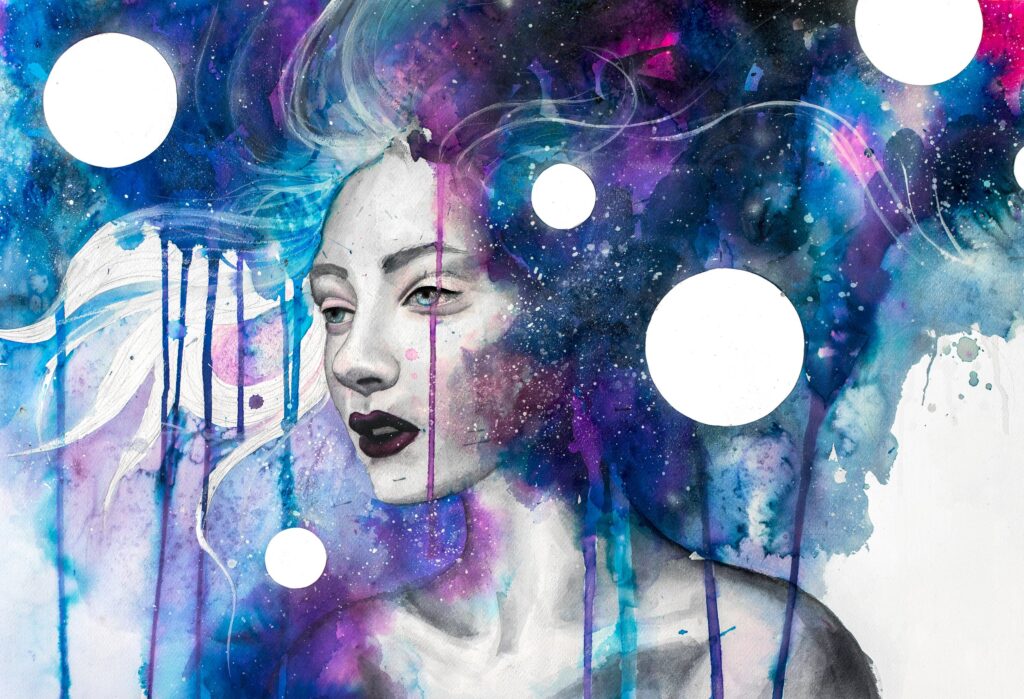
You have specialised in watercolour techniques. What is it in them that interests you?
A lot of artists are afraid of watercolour because it is a very unforgiving medium: you can endlessly fix your mistakes in oil or acrylic but, once you’ve painted something in watercolour, there is no going back. It is also impossible to fully control, you could never create the same piece twice, because the water would make the two pieces dry differently. It is the same quality that attracted me to water marbling, which I used to create my only abstract body of work “7.753” – a symbol of the uniqueness of each one of us.
Being able to sometimes let go of control is a very important ability to have, and one I personally struggle with, hence why the topic haunts me. I generally start a painting with an element I can’t control, like the background, and see what it looks like. Then I paint with more control to get the piece where I want it to go. It’s a lot like life: you cannot control what you are given, but you can control what you do with it.
Like you already mentioned, you also make your own watercolours and have created a collection called the Alchemist that can be used by other art enthusiasts as well. Do you feel you are an alchemist and mystic at heart?
I titled my first watercolour collection the Alchemist because spending hours mulling paint made me feel closer to artists in the past that usually had to make their own paint using pigments and base substances. So, the word has this medieval tone. Also, I named it this because the paints in the collection have different tones when you put them on black background instead of white one which feels like a little bit of magic. I love adding sparkly paints to my own work because it adds movement to a 2D image, especially in different kinds of light – so it creates a dynamic experience for the viewer.
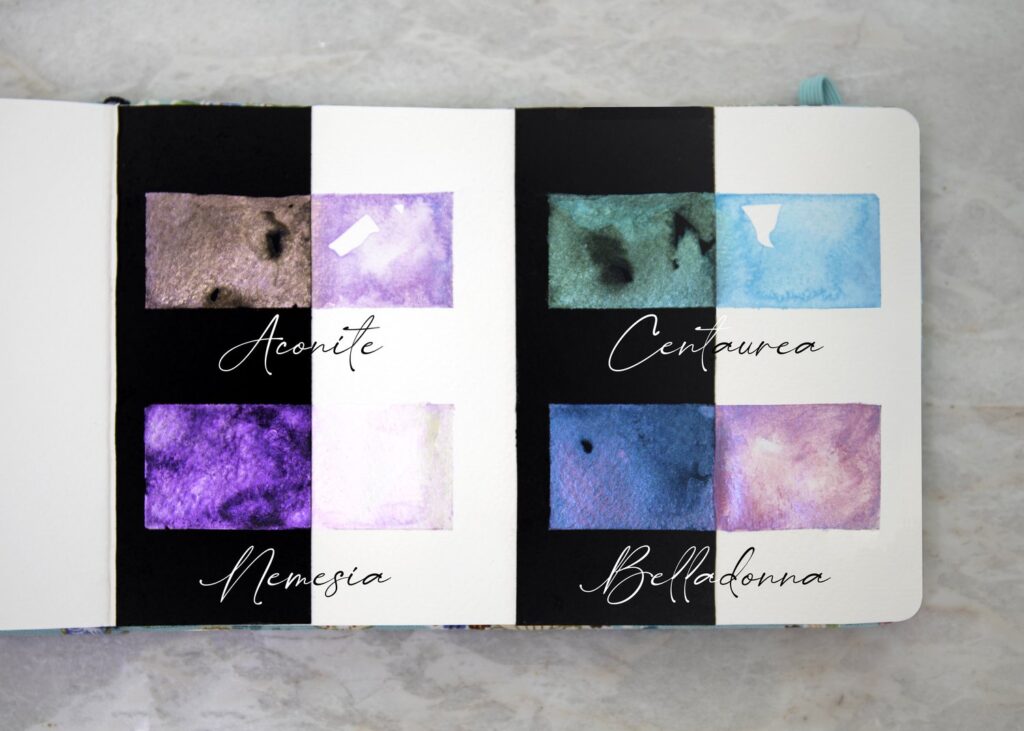
Making all my own paint is something that I would have found absurd in my past – to put so much work into something when you could just buy it. But the major paint manufacturers don’t make special paints like that, they are a bit too serious in that sense.
The thing that made me change my mind about making my own paint came to me one day in a fever dream. In my semi-awake state of delirium, I could visualise my perfect palette, and I just couldn’t get it out of my head, so I had to make it. This palette isn’t out yet, because I wish it to be close to perfection, but I still have many things to learn in paint making, product design, 3D moulding and manufacturing. Until then, they can be tested as separate pans and sets of four that are available in my gallery.
Interestingly, I had a whole year of paint making at the university, and literally the only kind of paint they didn’t teach us to make was watercolour. So, one day I will release my dream watercolour palette and send it to my paint making teacher.
Your own gallery celebrates its first year of operation soon. How did you come up with the idea of opening a gallery and what is its vision?
A lot of the contemporary art market focuses on abstract, minimalist and conceptual artwork, but if you asked random people on the street what they thought about it, they would not have an opinion, because it is rather hard to relate to it. I find most people are more interested in figurative artwork, which is very underrepresented in the current art scene, especially in Europe. So, I wanted to open a gallery to display this kind of work, both of my own creation as well as others’.
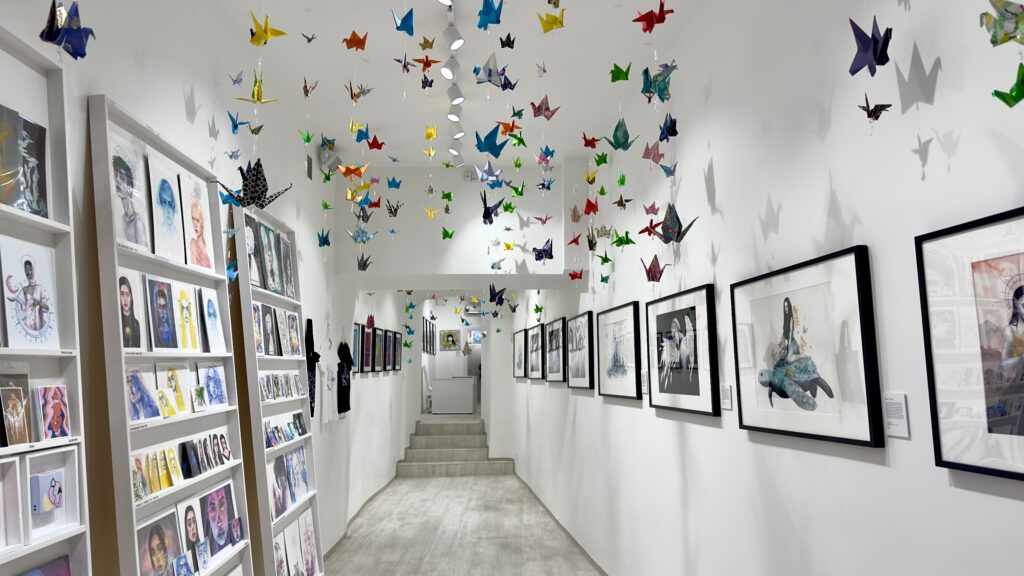
Having taken three years of art history in school I know that trends in the art world are cyclical, and we’re bound for a return of figuration in art. In fact, I’m starting to see more and more of it, so I think we opened it at a good time. Estonia may definitely seem as an unusual choice for opening an art gallery, especially when I have ties to both Madrid and Amsterdam, but I wanted to open the first one exactly here because this is where I come from and it felt natural.
Your personal exhibition “Lost Gods” recently ran in the gallery. It introduced ancient gods and heroes and the myths associated with them, from which there is still much to learn today. What have you learned or acknowledged yourself while preparing for that exhibition?
With regards to mythology, I am most fascinated by the groups of stories from each historical area and culture as well as comparing them, because things highlighted there show what was most important to them. Every culture has a different view on what it means to be a valuable person – in some it is to be beautiful, in some it is to be strong. One of the things most in flux is the status of women; they were given a lot of respect in the stories and this helps you see how the society they lived in treated them.
Of course, we don’t actually know what the myths were like when they were created back in the day, as many versions exist of every story. Many of them existed only in oral tradition, and frequently the version of the tale that survived was the version written down by medieval monks who had their own biases.
Something quite jarring for modern audiences can be how many of these myths told to children talk about very violent acts, like rape. We would never tell stories like this to our children today, but the world was a lot more dangerous back in the day, and this was a very practical way how ancient parents kept their children safe and alive.
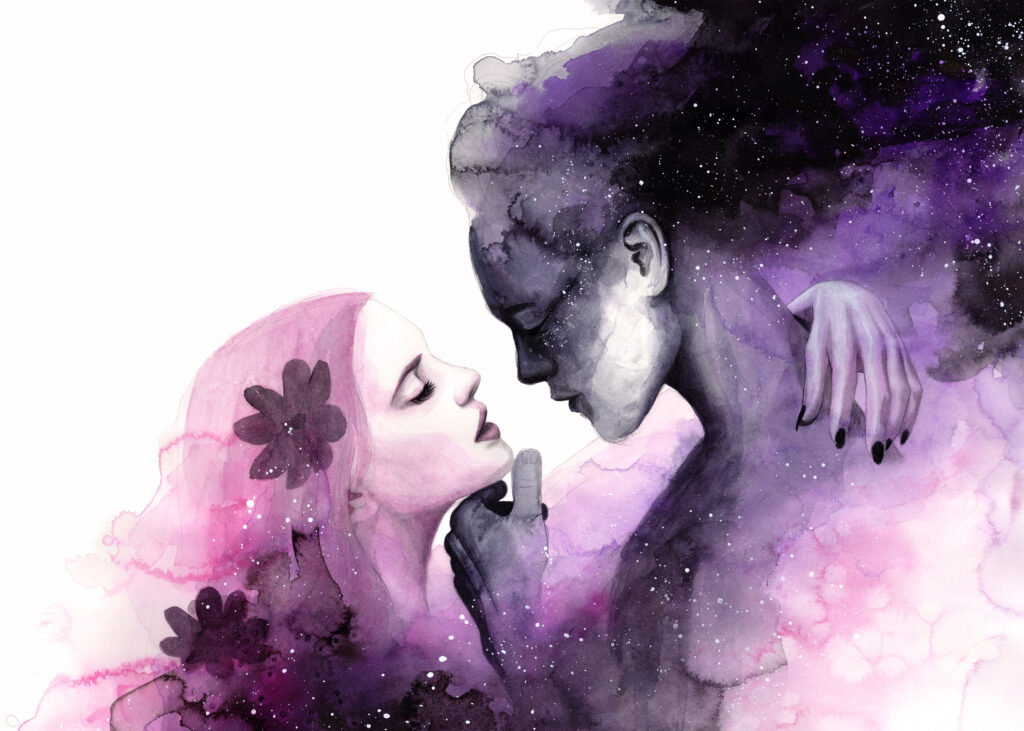
You have collaborated with the poet David Xam in one of your previous exhibitions, and you have another joint exhibition coming up this summer, too. How did you get to know each other, how do you inspire each other?
I have read a lot of poetry over the years. Poets have an ability of putting feelings into words that I lack. In fact, this is one of the main reasons I started painting to express myself. I followed David’s work online, and there really has been no other author whose poetry has lived in my mind for years without losing its impact quite like his. He has also followed my art for a long period, so it felt like a natural fit for our creation to coexist in a project.
Besides the exhibitions we are also working on a collaborative poetry and art book, which should come out sometime in the second half of this year. Right now, I am counting the days when the book of myths arrives from the printing house!

